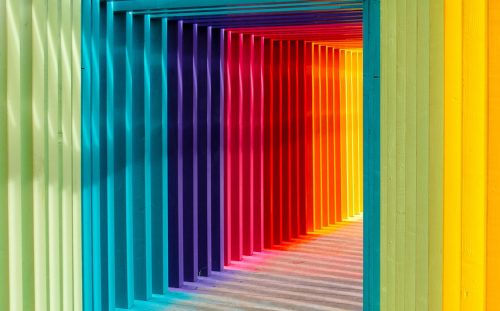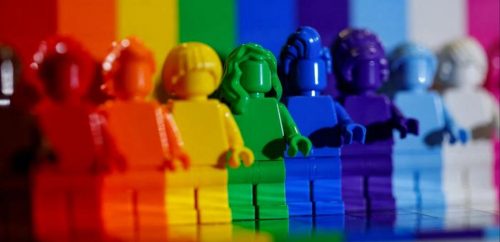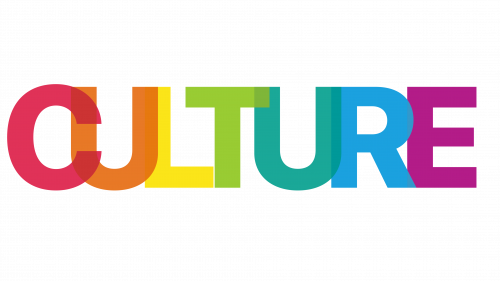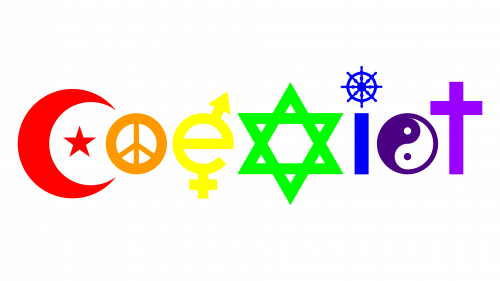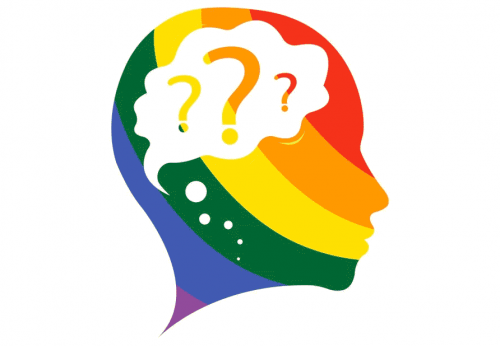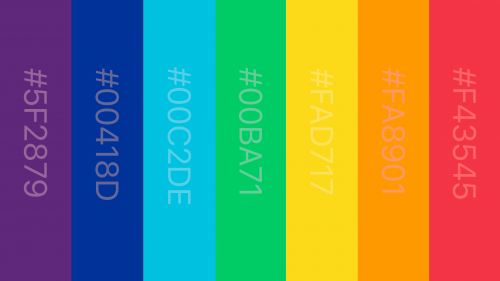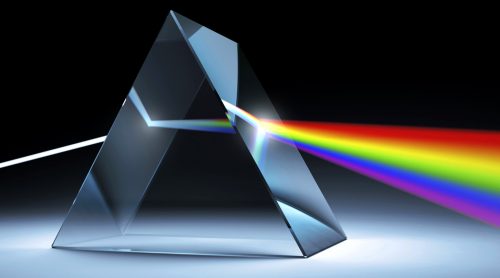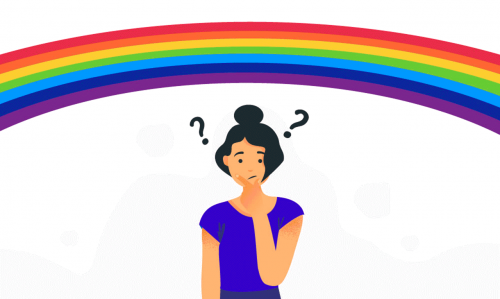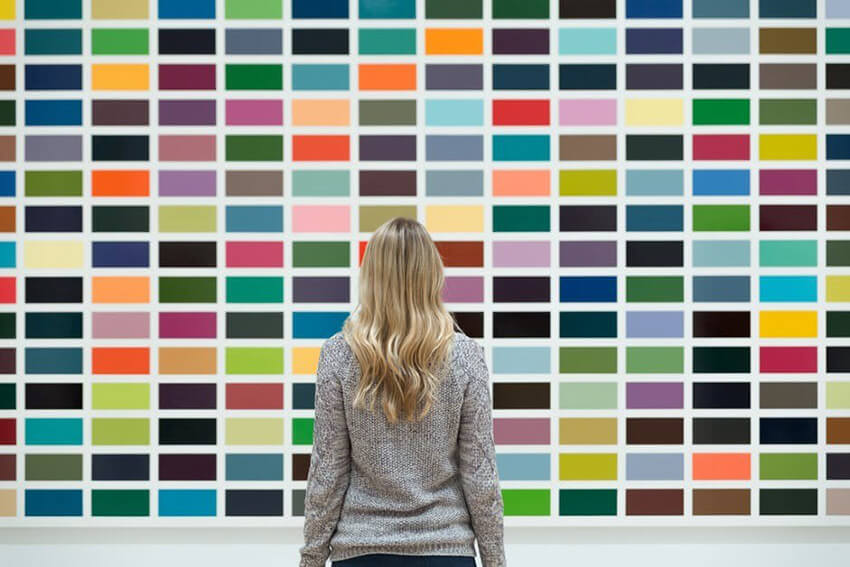A rainbow is a beautiful phenomenon that has meaning in various religions and cultures. Rainbows usually occur after a storm or downpour. Although the sun usually shines after it rains, the conditions are not always ideal for creating the appearance of a rainbow. For this reason, rainbows are considered special in many religions and cultures.
Physically speaking, a rainbow is an optical and meteorological phenomenon consisting of the breakdown of sunlight in a continuous visible spectrum in the sky. It occurs by refraction as the sun’s rays pass through tiny water droplets in the earth’s atmosphere.
So a rainbow is precisely the result of refracted sunlight colliding with raindrops. It is a multicolored arc with red on the outside and purple on the inside.
It is commonly believed that the rainbow consists of seven primary colors: red, orange, yellow, green, blue, blue, and violet. It is believed that the seven colors of the rainbow were first identified by Isaac Newton, initially, he designated only five (red, yellow, green, blue, and purple), but then increased the number of colors to seven, which corresponds to the number of notes in the scale.
The symbolism of the Rainbow
The symbolism of the rainbow is ambiguous. Mankind has associated the rainbow with many beliefs and legends. In ancient Greek mythology, for example, the rainbow was the road on which the messenger between the world of the gods and the world of men, Iris, walked. The ancient Slavs believed that the rainbow drinks water from lakes, rivers, and seas, which then rained on the ground. And in the Bible, the rainbow appears after the Flood as a symbol of the union between God and mankind.
The rainbow has and will continue to inspire many poets, painters, and photographers to create some of the brightest works of art. It also appears in many folk omens associated with weather predictions. For example, a high and steep rainbow means good weather, and a low and flat one means bad weather.
In general, folk omens and beliefs associated with the rainbow, are endless. People foretold the weather: a rainbow in the east meant clear days, in the west – rainy days. The duration of bad weather was also determined by the shape of its arc: if the arc was steep, precipitation would be short-lived, and if it was flat – prolonged heavy rains were expected.
In ancient times people knew about the coming harvest from the rainbow. The most productive was considered the places where the rainbow met the ground. The Croats were famous for their greatest ingenuity in fortune-telling because they saw a certain food product in every color line. The red band stood for grapes and wine, yellow for sunflowers, green for grains, blue for vegetables, etc.
All these optimistic superstitions, based on the idea of good omens, turned out to be very enduring and largely influenced the modern meaning of a truly popular symbol. From about the beginning of the twentieth century, the rainbow became a harbinger of joy and happiness, a symbol of the successful completion of undertakings and a prosperous outcome.
However, in many ancient and backward peoples, the rainbow represented the sign of death, as well as the associated meanings of the bridge between the natural and the afterlife, the stairway to heaven, and the road to paradise. To understand how such symbolic meanings of heavenly beauty were formed, it is necessary to refer to the origins and the mythological views of the ancients.
Rainbow in Culture
The rainbow symbolizes transformation, heavenly glory, the throne of the god of Heaven, the meeting of Heaven with Earth, and a bridge or border between worlds. In many cultures, it was a sign of the infinite mercy of God and his love for people.
In some cultures, the rainbow was calleda sky serpent or a bridge between two worlds. In traditional symbolism, the rainbow was represented as a huge snake that drinks the seas, rivers, and lakes; its arched tail shines with wonderful colors. The semi-circular shape of the rainbow made people think of a ring that encircles the earth.
In mythology, the attitude to the rainbow is ambivalent. Primitive peoples represented it as an evil living creature hostile to humans. The Burmese Karen regarded the rainbow as a demon devouring people’s souls. All those who died violently died because the rainbow had swallowed their souls. The South African Zulu were afraid to go into the water if a rainbow was reflected in it – the swimmer would be a snack for it in no time. Those who looked at its arc would be threatened with blindness or skin diseases.
In the myths of the Central African tribes, a prominent place holds Nkongolo, King of the Rainbow, a cruel and vengeful tyrant who punishes the death of anyone who dares to disrespectfully point a finger at the rainbow.
Most original are the beliefs of the inhabitants of the island of Nias, lying in the Indian Ocean near Sumatra. According to them, the rainbow – a huge net in the sky, set up some powerful spirit to catch human shadows, which are nothing more than their souls.
In some African myths,the celestial serpent is identified with the rainbow, which serves as a guardian of treasures or encircles the Earth in a ring.American Indians identify the rainbowwith stairs that lead to another world. Among the Incas, the rainbow was associated with the sacred Sun, and the Inca rulers wore its image on their coats of arms and emblems.
In Scandinavian mythology, “Bivrest” (“shaking road”) is a rainbow bridge connecting heaven and earth. He is guarded by the guardian of the gods Heimdall. Before the end of the world and the death of the gods, the bridge collapses.
In ancient Greece, the goddess of the rainbow was Irida, the messenger, who was depicted with wings and a caduceus. Her attire is made up of iridescent dew drops.
In Slavic myths and legends, a rainbow was considered a magical heavenly bridge that was thrown from heaven to earth, a road along which angels descend from heaven to draw water from rivers. They pour this water into the clouds and from there it falls as life-giving rain.
In heraldry, the image of the rainbow was in demand only until the 15th century. The heraldic rainbow looked like a three-color or five-color semi-circle, and each of its colors was given a special symbolic meaning: red meant the extinguished wrath of God, yellow – the generosity of God, green – the mercy of God, blue – God-sent peace, violet – the greatness of God.
During the late Middle Ages, the image of the rainbow as a symbolic path to happiness became very popular with the common people. During the Peasants’ War in Germany (1524-1525) rebel leader Thomas Münzer placed the image of the rainbow on his banners. All this led to the fact that the feudal lords refused to further use in heraldry a symbol hostile to them.
Currently, the image of the rainbow can be seen only in the coats of arms of the three dwarf states of Central America: Honduras, El Salvador, and Nicaragua.
In emblematic, the rainbow symbol played a very important role when the French historian Pierre de Coubertin had the lucky idea to create an Olympic emblem based on it: five stapled together sports rings, the symbol of the Olympic Games, are painted in the colors of the five-striped rainbow.
Rainbow in Religion
World religions have developed a generally positive symbolic meaning of the rainbow as the stairway to heaven or the road to paradise.
In Tibetan Tantric Buddhism the rainbow represents a transitional state of meditation in which the material substance begins to transform into energy, into pure light.
In Jewish and then the Christian traditions the rainbow symbolizes the reconciliation of God with life on earth after the Flood as a symbol of prosperity and grace. Christianity also interpreted the three colors of the rainbow: blue represented the Deluge, red the world fire, and green the arrival of peace on earth. So for Jews and Christians, the rainbow is an exceptionally good sign.
In Islam, the rainbow consists of four colors – red, yellow, green, and blue, corresponding to the four elements.
In China, a rainbow is a heavenly dragon, the union of Heaven and Earth, a sign of the unification of yin and yang. In ancient India, the rainbow is the bow of Indra, the god of thunder; in addition, in Hinduism and Buddhism, the “rainbow body” is the highest yogic state attainable in the realm of samsara.
In iconography, the tricolor rainbow symbolized the Divine Trinity. In Western European art, the rainbow also appears as the heavenly throne on which Christ – the Judge – sits; sometimes it can be found as one of the attributes of the Virgin.
Rainbow in Psychology
The rainbow symbolizes a new path, beginnings, peace and harmony, beauty, and, of course, love. In folk omens, the rainbow entered already many years ago. After all, we all know the omens. If you see a double rainbow, make a wish. In the past, and even now, many people use rain falling during the rainbow for cleansing. Also, rainwater is good for any potion.
Colors affect us, can awaken our appetite, change our moods, and make us feel good. Imagine yourself walking past a shop window with a huge variety of ice cream: red, yellow, and green. You instantly have taste associations in your mouth and an urge to eat it.same with the weather — when it’s a gray rainy day, your mood is the same; and when it is sunny and bright outside you feel happy and energetic.
The colors of the Rainbow and their meanings
As we all know, there are three primary colors: blue, yellow, and red. All other colors are obtained by mixing these three. Green comes from mixing blue and yellow, orange comes from mixing yellow and red, purple comes from mixing blue and red, and so on. And each of the colors has its associations and meanings.
Color symbolism dates back to ancient times. From time immemorial, people have endowed colors with a special semantic meaning, which is reflected in various religious and mystical teachings, myths, folk tales, and legends.
For example, in astrology, the seven main colors of the spectrum correspond to seven planets: blue is the color of Venus, red is associated with Mars (the red planet), green with Saturn, yellow with Mercury, purple is identified with the Moon, and orange with the Sun. In esoteric practice, blue is often used for concentration, meditation, in the process of self-knowledge.
Now let’s proceed directly to the topic of the article, that is, the symbolism of the colors of the rainbow:
- Red
- Orange
- Yellow
- Green
- Blue
- Indigo
- Violet
Red
Red is one of the most powerful colors, the color of power, victory, leadership, and passion. Red is an energetic activity, the desire for success through struggle, excitement, the need to act and expend effort, and initiative. It is the red arc is the first in the composition of the rainbow, and therefore has the longest wavelength of light.
In Christianity, this arc corresponds to the Archangel Uriel, which represents wisdom and energy. In modern Buddhism and Hinduism, the Red Arc corresponds to the base chakra or Muladhara, which connects or “grounds” a person to the physical plane.
Red is the color of life and the happiness hormone but is also considered the color of aggression and danger.
Orange
The second arc of the rainbow is orange. It is the color of optimism, a mixture of yellow and red – a kind of intermediate shade between passion and childlike spontaneity. Orange symbolizes rhythm, energy, activity, friendliness, and creativity. In Buddhism, it is a symbol of humility, which is why monks wear robes of this color. Orange is a symbol of fire, liberating from vices.
In the rainbow, orange represents creativity and the ability to enjoy. According to the chakra system, the orange arc represents Swadhisthana, which is the energy associated with fertility, sexuality, and creativity.
Orange is the color of action and creation. But there are also negative meanings – sometimes this color symbolizes or provokes nervousness and irritation.
Yellow
The third soul of the rainbow is the color yellow. Usually, this color is associated with optimism, good spirits, and joy. Yellow is hopefulness, joy, relaxation, eagerness for new things, liberation, optimism, and liberation. Susceptibility, emotional expression, empowerment.
In Asian countries, however, yellow symbolizes sorrow and death. If the shade of yellow is taken away to lemon, it characterizes sarcasm, sarcasm, and cruelty.
The yellow arc in the rainbow is associated with the Archangel Jophiel, who represents the brilliance of wisdom and thought. Within the rainbow, yellow represents the glow of the Sun. In the chakra system, the yellow arc corresponds to the Manipura chakra, which is the seat of one’s ego and personal power, just as the sun nourishes the earth.
Green
Green is the color of the fourth arc of the rainbow. It is the color of prosperity and vitality. Green is a symbol of success, power, perseverance, and self-confidence. This color represents Persistence to achieve goals.
This arc is associated with the Archangel Raphael, who is summoned for healing. Within the rainbow, green represents health, wealth, and love. In the chakra system, the green arc represents Anahata, the heart chakra, where the ability to give and receive love is processed.
In Islam, green is the primary color, symbolizing living nature and associated with Muslim notions of paradise.
Blue
The fifth arch of the rainbow is bright blue. The color of the sky and the sea is a shade that symbolizes trust, freedom, and spiritual balance. This arch is associated with the Archangel Michael, the leader of all the archangels, and represents spirituality.
Within the rainbow, blue represents the connection to water and the spiritual world. In the chakra system, the blue arc represents Vishuddha, which is the throat chakra and the ability to communicate with purity. Blue is the color of meditation, it is relaxing and helps one to get rid of negative emotions and physical stiffness
In addition to being a symbol of trust and reliability, blue is also the color of creativity.
Indigo
Indigo is the color of the sixth sap in the rainbow. This color symbolizes concentration, self-confidence, analytical skills, willpower, stamina, and leadership qualities.
Indigo symbolizes a state of peace, a need for rest, emotional stability, mental attachment to a partner, peacefulness, as well as Harmony, and contentment. Indigo is the color of spirituality and peace.
Within the rainbow, indigo represents the bridge between the conscious and subconscious worlds. In the chakra system, the indigo arc is the Ajna chakra, which represents the third eye and the ability to see the invisible on the spiritual plane.
Violet
The last, seventh so far in the rainbow is violet. Since ancient times, this color has had a magical meaning. People use it to emphasize their personality, power, and influence. This color helps you to go deeper into your inner world and get to know yourself better. Violet symbolizes inner change and transformation.
Violet is a color that symbolizes impressiveness, emotional expression, sensitivity, intuitive understanding, and dreaminess.
This arc is associated with the Archangel Zadkale, who represents mercy. Within the rainbow, Violet represents a mixture of red and blue and signifies access to the imagination and divine inspiration. Within the chakra system, the violet arc is the Sahasrara chakra, which corresponds to the point at which human consciousness connects with divine, or spiritual consciousness.
Rainbow and Science
Scientists have long thought about the nature of the rainbow. It is believed that the first scientific explanation of the phenomenon of the rainbow was tried by Aristotle, but the most important experiments that shed light on the nature of this amazing phenomenon belong to René Descartes.
In the 17th century, French scientist was able to simulate and study in detail the refraction of light rays inside a water drop. He used a glass ball filled with water as a model.
Descartes’ research was supplemented by the brilliant Isaac Newton, who replaced the ball with a glass prism that allowed the invisible beam of white light to be divided into a spectrum. It was these scientists who proved that the main conditions for the emergence of the rainbow are water droplets and a beam of light.
So, how does a rainbow form? After it rains, while the little water droplets are still held up by the air currents, the sun’s rays pass through them, refract, reflect, and return to us. As the sun’s rays pass through the droplets, the colors formed to create a band of colored matching lines called a “spectrum.” The red line is always at one end of the spectrum and the purple line is always at the other. This is because different color rays have different wavelengths: they increase from violet to red.
The larger the water droplets, the brighter and richer the colors of the rainbow. Two people standing next to each other cannot see exactly the same rainbow, because the size and density of the droplets may be different in different places.
How many colors does a rainbow have?
Thanks to Newton, we know that there is a rainbow in white light. It is shown by the dispersion of light refraction in a prism or on a suspension that occurs in the air when it rains. We see the light of different wavelengths, which causes us to feel the transition from violet to blue, yellow, and red. Each of the colors of the rainbow corresponds directly to a specific wavelength.
So how many colors does the rainbow have? There is no one opinion on this question. The rainbow has always been seen differently at different times in history and by different people. It was distinguished into three main colors, four, five, and as many as you like. Aristotle distinguished only three colors: red, green, and purple. The Australian aborigines had six. Some African tribes see only two colors in the rainbow: dark and light.
But Newton called the rainbow a seven-color rainbow. The great scientist was fond of mysticism and determined the number of colors of the rainbow for the magic number 7. At first, he counted five colors, but later, finding one more color, orange, he considered it a theological obsession: the number 6 was diabolic for him. And, seeking to create a correspondence between the number of colors of the spectrum and the number of the basic tones of the musical scale, Newton added one more color to the six listed colors of the spectrum – indigo. So, thanks to his superstition, Newton became the father of the seven-color rainbow.
The number of colors in the rainbow is not a convention, because the colors of the spectrum pass into each other smoothly, without sharp boundaries. But most clearly distinguished five primary colors: red, yellow, green, blue, and purple. As transitions between them, you can distinguish additional shades: red-yellow (orange), yellow-green, green-blue, and violet-blue (blue).
The number of colors in a natural rainbow depends on the particular rainbow. The fact is that nature arranges the light a little differently each time. Often the number of colors in the rainbow is limited to three basic hues: red, green, and purple. Sometimes yellow-orange is added to these. Sometimes there is a white stripe in the rainbow as well.And millions of invisible shades.
Why can’t the human eye distinguish all the shades of the rainbow?
The colors a rainbow throws out are colors in the visible spectrum. Our eyes see only a small percentage of the colors that make up white light. Humans can only perceive wavelengths between 400 and 700 nanometers. Which means that our eyes can only distinguish colors within that frequency. But lightis made up of colors of different frequencies.
For example, people cannot see ultraviolet or infrared light. Within those wavelengths that form visible light, there are also several different colors. A rainbow is actually made up of many overlapping bands of colors. Not just the seven stripes that everyone is familiar with.
So, what we see when we look at a rainbow is a mixture of different colors. Which form what people usually think of as a rainbow.


